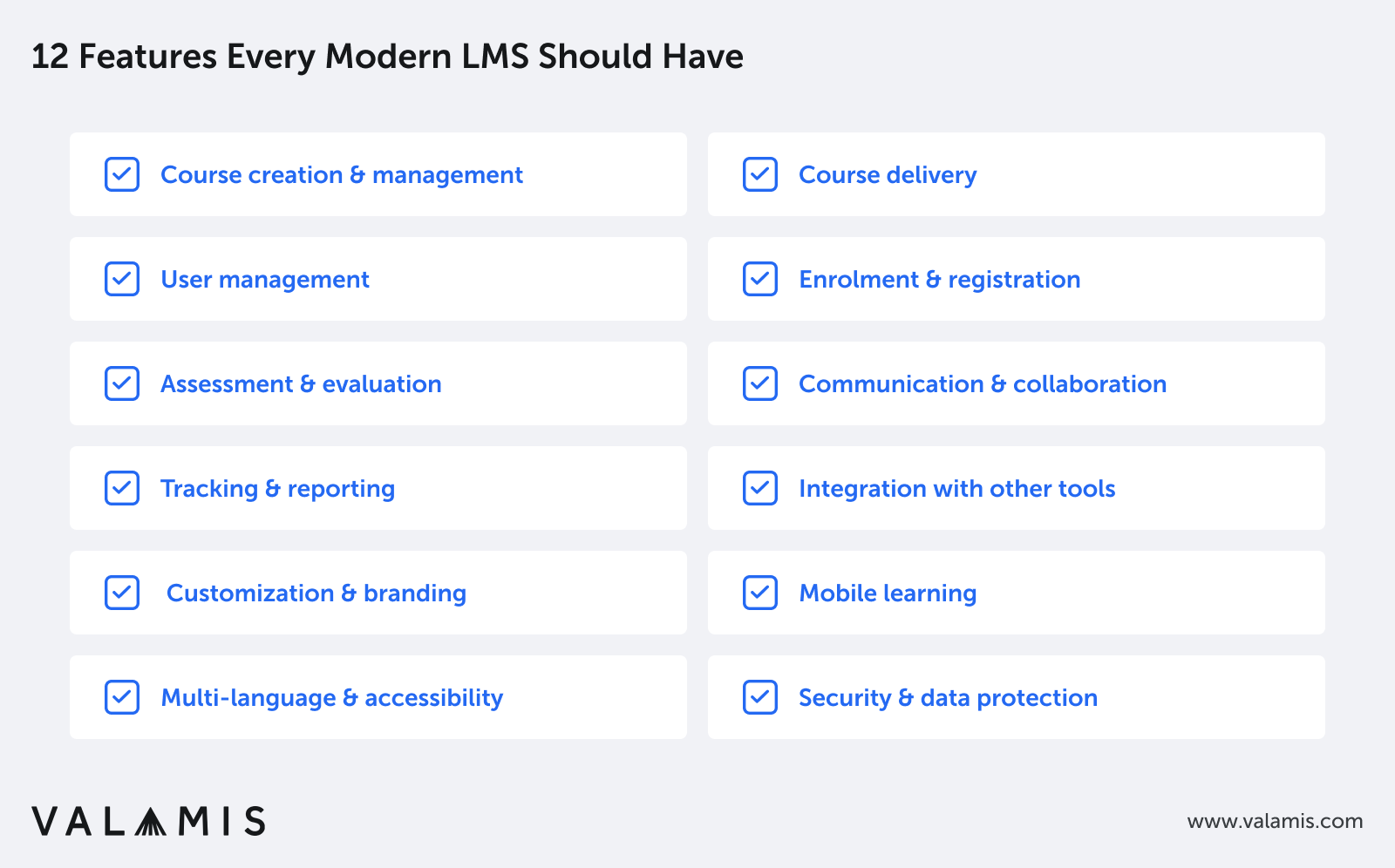Enterprise Learning Platform
Discover what an enterprise learning platform is and why you need a new learning solution. Discover the main features every enterprise LMS should have.
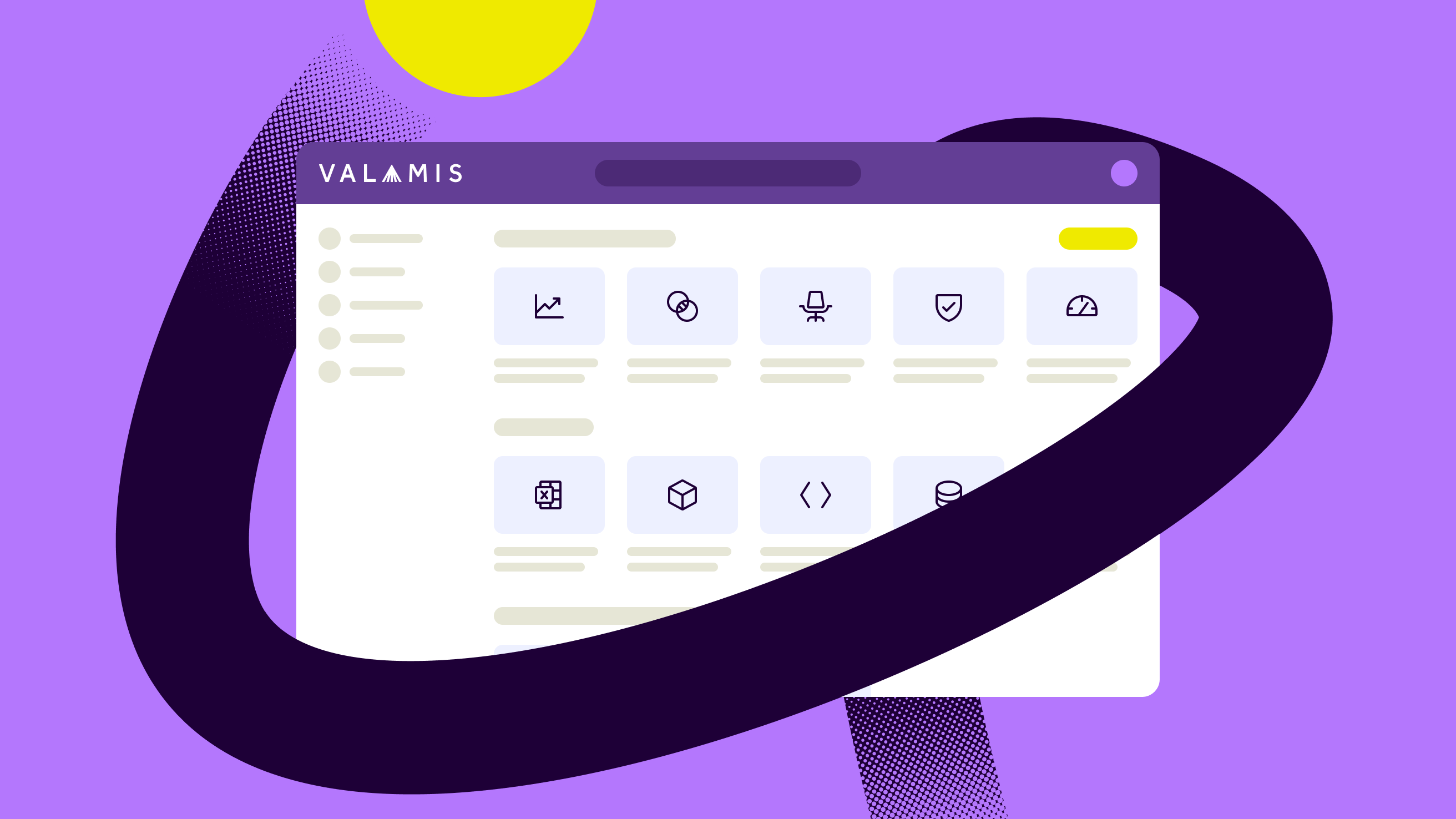
Choosing an Enterprise Learning Platform – the different types, features, and solutions on offer
Learning in the workplace, enhancing employee skillsets and developing future leaders, is a critical part of running a company. Plus, with the changing needs of modern businesses and a global talent shortage, the pressure on internal L&D programs will only intensify in the coming years.
Thankfully, many enterprise learning platform options are available to help businesses organize their training needs. So how can you find the right solution for your company? In this article, we will cover:
- What is an enterprise learning platform?
- The different types of enterprise learning management
- The benefits of enterprise learning management systems
- Choosing the right enterprise learning platform for your business
- The features an enterprise LMS should have
What is an Enterprise Learning Platform?
An enterprise learning platform is a piece of software designed to enable learning activities at an enterprise-level organization. This typically includes functionality for delivering, managing, tracking, analyzing, and evaluating workforce training and employee learning activities.
Enterprise learning management (ELM) tools help management oversee L&D across the entire organization while also helping employees take advantage of new learning opportunities.
They streamline learning processes, simplify access to educational resources, track employee training and performance, aid the development of new skills, improve learner engagement, and ensure regulatory compliance.
Nowadays, these solutions are generally enterprise learning platforms, delivering training content in digital formats. This allows:
- Organizations to offer personalized training programs
- Learners to access content online regardless of their location or device
- Material to be quickly updated in order to reflect new business trends
- Data gathering for analytics and the tracking of crucial L&D metrics
- The simplification of HR administration
The different types of Enterprise Learning Platform
There are a broad range of learning platforms for enterprise, each with a different focus and functionality.
The two most common solutions are learning management systems (LMSs) and learning experience platforms (LXPs):
1. Enterprise LMS
Enterprise LMS is mainly used for creating, distributing, and managing training material.
While LMSs vary considerably, their core functionality typically allows L&D teams to upload content, deliver learning experiences, communicate with employees, and share data with the relevant stakeholders.
An LMS acts as a single centralized hub, containing all of an organization’s educational content and keeping track of employees as they progress through different courses and programs.
2. LXP
LXP is used as a solution for creating personalized learning experiences.
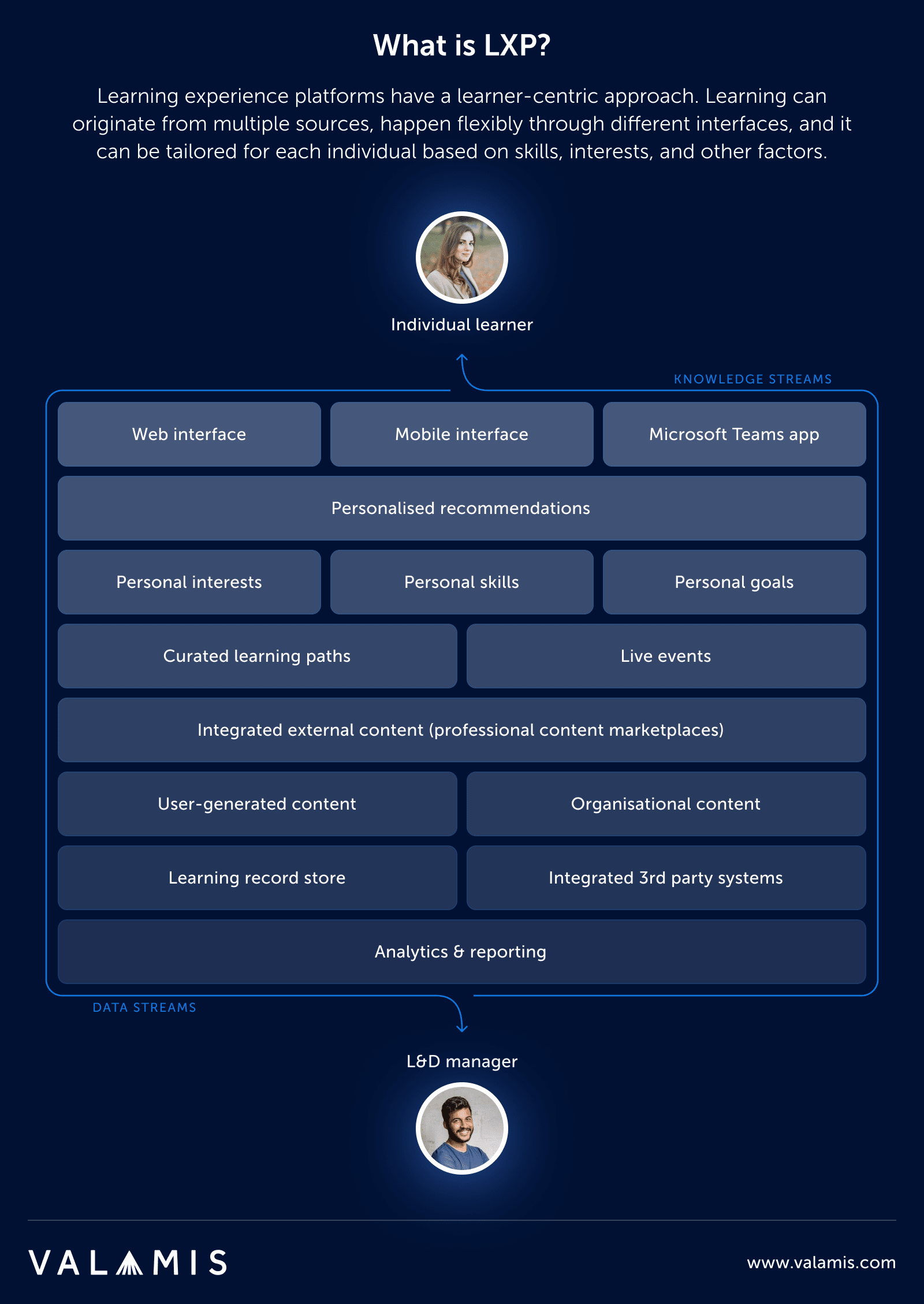
LXPs combine both internal and external 3rd party training material to recommend the best learning opportunities for each employee.
This is done by tracking employee performance data to understand the areas where staff excel and where they can improve. By delivering more-relevant content, LXPs aim to enhance learner engagement and increase the impact of L&D efforts.
LMSs and LXPs generally offer course authoring tools to help instructional designers generate and distribute new educational material.

Is your company set for a digital learning solution?
You can quickly assess strengths, weaknesses, and areas for improvement with the template.
DOWNLOAD checklistBoth these types of enterprise learning platforms can also be deployed on-premises or as a cloud-based solution. While on-premises ELM tools increase a business’s control over data and compliance, a cloud-based deployment offers greater scalability and accessibility while removing the need for in-house IT infrastructure.
Read more about the differences between LMS and LXP and which platform to choose in 2025.
The benefits of Enterprise Learning Management Systems
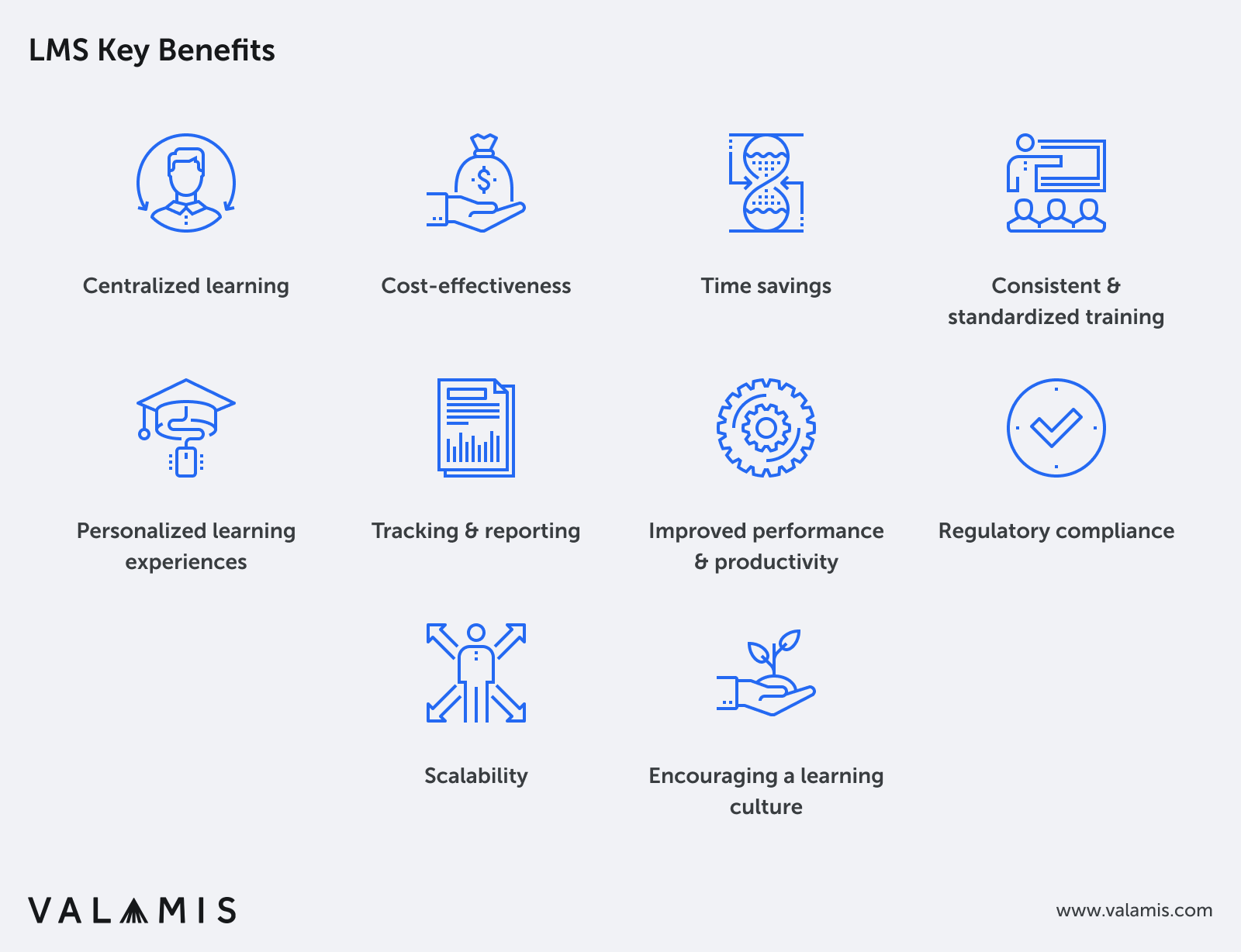
Incorporating technology into L&D processes through enterprise learning management systems offers a range of benefits. We grouped them into three categories:
1. Accessibility
Enterprise learning platforms allow businesses to move away from in-person or classroom-style training.
Although these practices have value, they can be time-consuming and inefficient, requiring instructors and learners to be in the same location at the same time. This is often at odds with the modern workplace, where employees prefer to fit learning around their existing responsibilities.
Online learning with an enterprise learning platform means employees can view training material whenever and wherever they choose – accessing educational content at a time and place of their choosing, tracking their own progress, and continuing where they left off, thanks to an easy-to-use digital platform.
Read more about different types of corporate trainings and reasons why trainings can fail.
2. Administration
Enterprise LMSs transform how HR departments and L&D teams operate, dramatically simplifying the generation and delivery of training material as well as how training effectiveness is measured.
With an enterprise learning platform, teams can instantly share new material with different employees and update content to reflect new organizational goals.
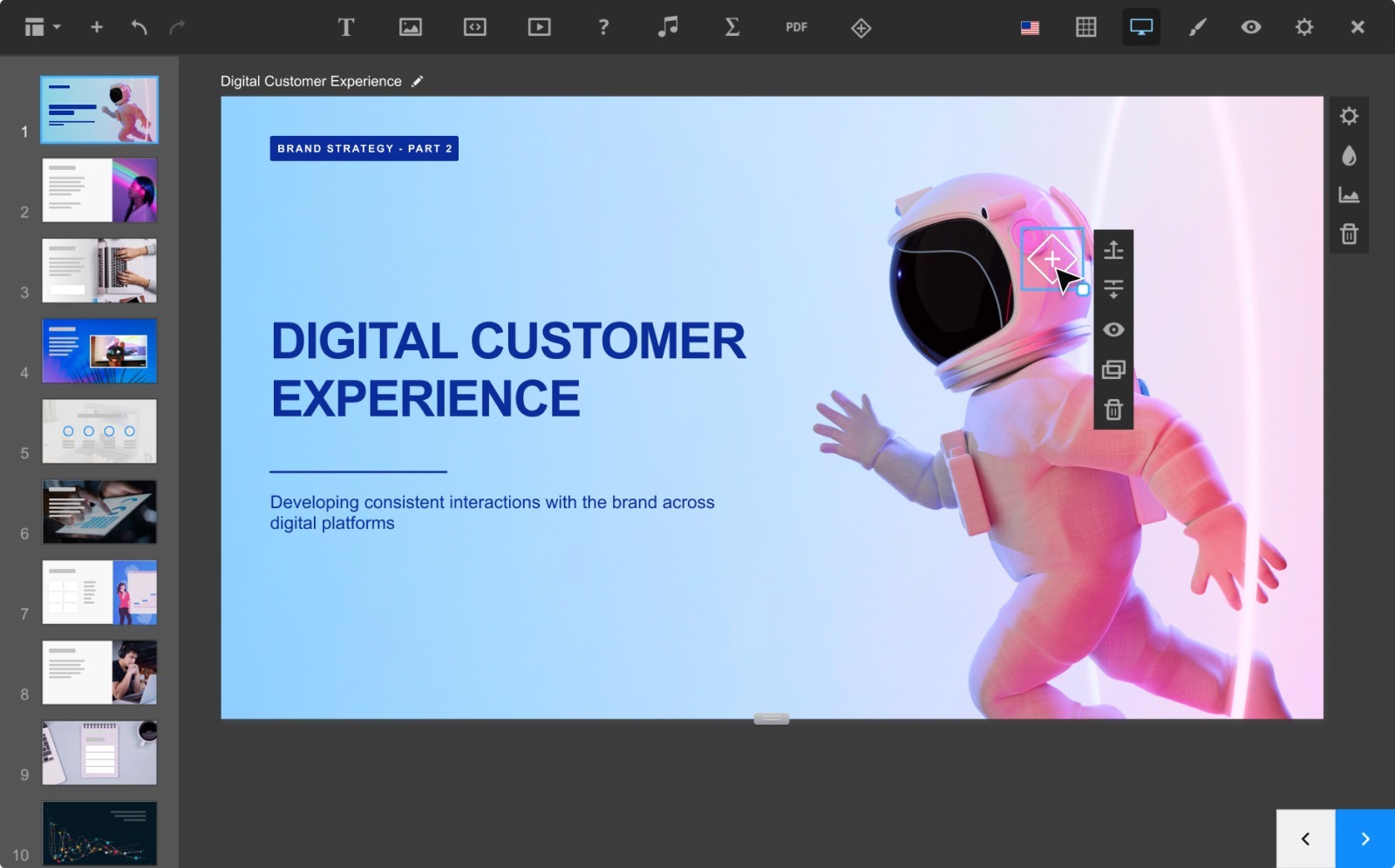
With content authoring capabilities in the Valamis Learning Platform, organizations utilize user-generated content. Each employee can easily create learning modules and share knowledge.
They can accurately track employee progress and measure key L&D metrics to understand the impact of various learning activities.
They can securely share data with the relevant parties and utilize analytics to find patterns in the data that lead to meaningful, positive changes moving forward.
With an enterprise LMS, HR teams can reduce the time it takes to deliver training courses while also enhancing the quality of the training provided. Staff are no longer burdened with simple, repetitive administrative work and instead can focus on impactful, additive tasks.
Discover how Valamis can help you to increase learning engagement with its Content features.
3. Performance
An IBM study of high-performance and poor-performance companies found a dramatic difference in employee training. At top companies, 84% of staff received the training they needed compared to only 16% at struggling operations.
Research also shows that projects, where team members received 40 hours of training were three times more likely to meet their objectives compared to those where employees received 30 hours or less.
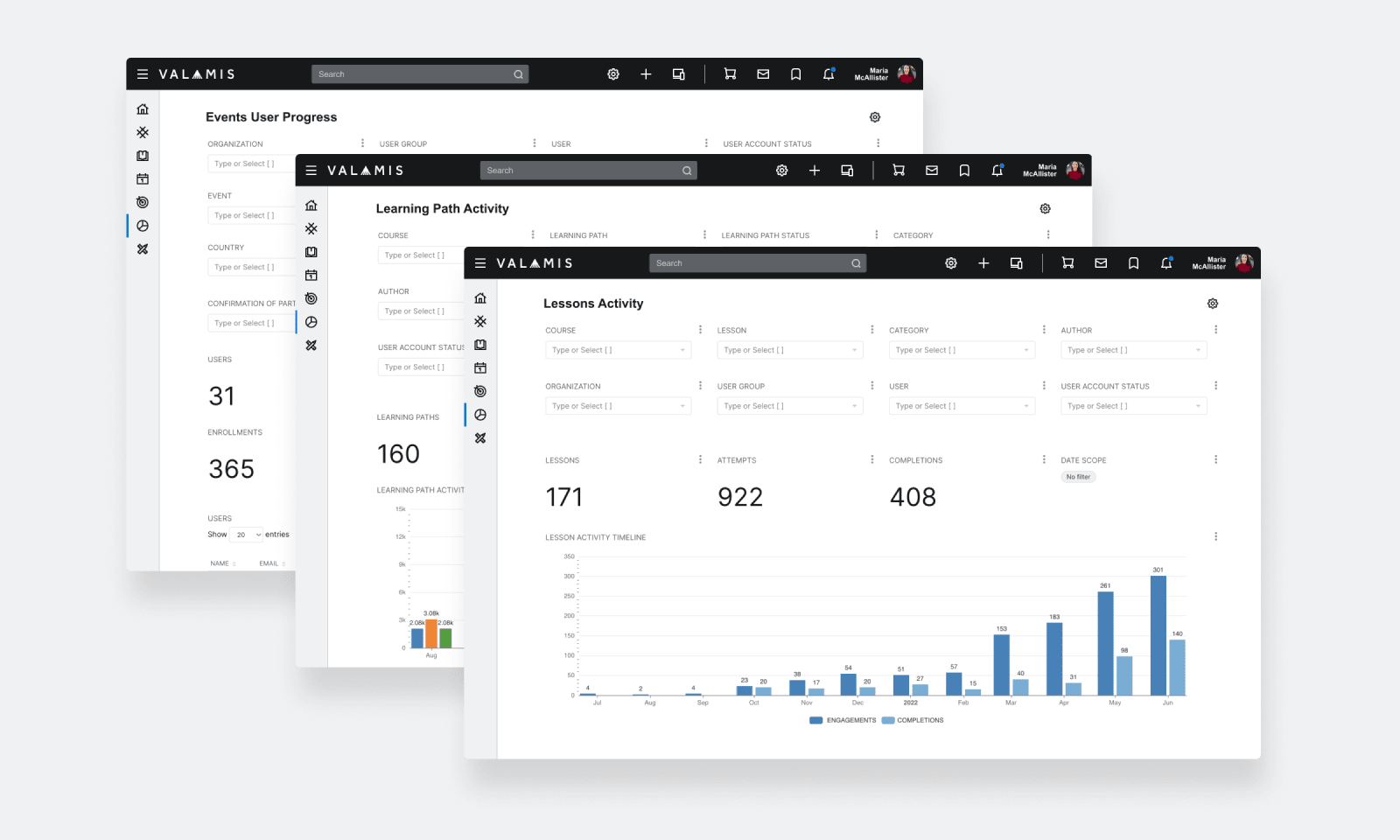
An example of collected data with the Valamis Learning Solution
Investing in training leads to significant employee performance benefits and, therefore, a greater chance of achieving business goals. IBM research shows implementing a learning solution to build a skilled workforce produces numerous performance benefits, including:
- 16% increase in customer satisfaction among companies incorporating learning technology
- 10% increase in productivity when teams are well trained
- 22% faster product rollouts
Choosing the right Enterprise Learning Platform for your business
With many benefits on offer, it is easy to see why so many businesses are incorporating ELM platforms.
A study from February 2022 shows 87% of companies use at least one enterprise LMS solution. But given the wide range of solutions available, how do you find the right platform for your business?
1. Define what you want to achieve
Enterprise learning platforms are designed to support learning activities. In practice, this can take many different forms, and it is up to leadership and HR staff to determine how they are implemented. Guiding the process must always be the L&D goals of your organization; what do you want to achieve by improving enterprise learning?
Do you want to:
- Reskill and upskill employees to close gaps and adapt to the new digital economy?
- Reduce costs without reducing the impact of workplace training?
- Install a new organization-wide learning culture and support an ethos of continuous learning?
Whatever your goal is, without clearly defined aims in mind, it is impossible to know whether a particular enterprise learning platform will meet your needs.
2. Researching your workforce
Another vital factor to consider is your workforce.
How will employees interact with the ELM platform, and how can you maximize their learning experiences?
Understanding the needs of staff members is critical when selecting a learning platform.
What content will the staff be consuming? What are people’s preferred learning styles? When and how will employees undergo training?
These questions and more are fundamental to choosing an effective enterprise learning platform.
3. Features & functionality
Once you know what you want to achieve and understand your workforce’s preferences, you can plan for what an enterprise LMS would look like at your organization. Translate goals and workforce needs into the features and functionality you need to make it work.
See the section below for a list of features to consider.

Is your company set for a digital learning solution?
You can quickly assess strengths, weaknesses, and areas for improvement with the template.
DOWNLOAD checklist4. Integration
Your enterprise learning platform will not exist in a vacuum.
Ensure any potential ELM solution integrates with existing systems. This could be the broader learning technology stack or even, the wider IT infrastructure of the business.
In particular, you can check whether an enterprise LMS supports common eLearning standards and formats such as SCORM or xAPI.
5. Measuring results
The outcome of a new enterprise e-learning platform and determining the effectiveness of new training processes can be difficult to discover.
Identify solutions with extensive data collection and testing to ensure the training offered transfers into enhanced employee performance.
You want to be able to break down the progress of individual employees and understand how their performance KPIs evolve over time.
6. Other factors to consider
Other critical factors to consider when researching enterprise learning platforms might include the following:
- Budget
- Data management security
- Vendor support
- Customization
- User-friendly design
You can read our blog for more detailed data on How to Choose an LMS – Comprehensive Guide
The features an enterprise LMS should have
You can learn about all these features in one of our articles on Learning Management Systems (LMS). Below, we’ve listed a few of them.
1. Content management
Enterprise LMSs must enable instructors to generate and edit course content in a range of formats, including text, videos, and audio. This requires content authoring tools and, typically, support for eLearning standards.
Beyond creating in-house content, modern enterprise learning platforms should also provide access to online course providers, whether they are free or require a fee for access.
2. Content delivery
Training material needs to be easily accessible and searchable for employees. This means employees can access new content with just an internet connection and store content locally on approved devices for offline training.
It also means they can search for critical pieces of information seamlessly without having to read lengthy documents to find the answer to a quick question.
More and more enterprise learning platforms are incorporating personalization and features such as recommendation engines to pinpoint the best possible content for an employee at a point in their professional development. This form of content delivery helps maximize the impact of time spent learning.
3. Administration
It is important to have simple administration features such as user management and course enrollment/registration. This allows HR staff to manage accounts on the platform, assign roles, and grant permissions.
It also helps oversee and track the material being consumed by employees.
4. Assessment
LMSs need to have multiple assessment tools, including quizzes, tests, and assignments, to determine the knowledge obtained from a training course.
Beyond assessing employees themselves, learning platforms should also offer the chance to evaluate the quality of a particular course. Hearing feedback from participants can help create a better learning experience for future employees.
5. Social features
Many people learn better in groups or through social interactions. Often the best person to communicate a new idea or concept is a colleague with a similar perspective.
They may be able to break down the material into more relevant language or apply the knowledge to a specific situation familiar to both employees.
ELM platforms should encourage communication between learners and between the instructor and learners. This includes messaging systems, chat features, discussion forums, file-sharing functionality, and other collaborative tools.
6. Analytics
Tracking learner interactions and progress throughout the employee life cycle is vital.
With data detailing how staff responds to particular training programs, businesses can gain new insights and improve the overall effectiveness of their L&D efforts.
7. Security
Generating all this data means organizations must consider security and compliance with relevant regulations (e.g., GDPR, FERPA, etc.). Enterprise LMSs now need to offer comprehensive data protections, including encryption and authentication.

